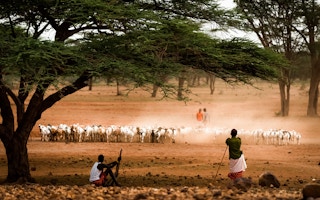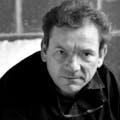You would be forgiven for thinking that livestock and sustainable development don’t mix. Reducing meat consumption has sometimes been cited as a great way to combat climate change — one of the anchors of the 2030 agenda for sustainable development — given that the livestock sector’s carbon emissions are equal to those from all the road vehicles in the world.
But aren’t we oversimplifying the role the sector can play in meeting the Sustainable Development Goals (SDGs)?
Livestock production systems, enterprises and consumption patterns vastly differ around the world, and contribute more broadly to sustainable development than is currently recognised.
To harness livestock for the greatest good, it is essential to grasp this huge diversity in practices and understand the different interventions it requires.
I chair the Livestock Global Alliance — a consortium of international public agencies offering a united voice on this issue — which this week publishes the first of a series of policy briefs that sheds light on how this can be done.
Grazing systems
Take grazing systems, in which roaming animals feed on natural grass across various climates and regions worldwide. They offer a source of income where no other is possible for some 100 million people living in harsh, arid environments, where pastoral production is the main or only economic activity.
In African drylands, for example, meat and milk production typically accounts for more than ten per cent of total GDP (gross domestic product) and up to 70 per cent of agricultural GDP.
Livestock contribute to food security (small livestock are sold to buy grain) and also improve the health of pastoralists, whose main source of micronutrients is milk from their herds.
Pastoral production is coming under increasing stress, in particular due to increasingly restricted movement and conflicts that hinder people’s capacity to cope as weather conditions become harsher and more unpredictable.
Countries where such pastoral systems exist, such as those in the Sahel and Horn of Africa, need support to improve access to assets and services, such as markets and animal healthcare.
A combination of measures is required to mitigate impacts of climate-related disasters and animal-disease crises. One example is early warning and rapid response systems with index-based livestock insurance being tested in Ethiopia, Kenya and Mongolia.
In Kenya, the scheme uses satellite imagery to determine forage availability, and payouts are triggered when a lack of rain shrinks grazing to less than 20 per cent of average conditions.
Mixed crop-and-livestock systems
Mixed crop-and-livestock systems are another example — the largest category of animal production in the world, covering about 2.5 billion hectares. They involve producing animals and crops on the same area of land.
When managed well, mixed systems also bring environmental benefits by using and recycling natural resources efficiently. For instance, animal manure improves soils and crop production, while crop residues and by-products can supplement animal feed.
But mixed farms are often tiny and widely dispersed. This prevents smallholders from accessing inputs, services and markets — and markets increasingly require traceable products, stringent hygiene and large volumes. Collective action is often vital to overcoming such constraints.
For example, 40,000 small-scale milk vendors in Kenya collectively generated an extra US$16 million across the dairy industry by being able to charge better prices for certified milk.
The key here was policy changes and training that made it easier for farmers to comply with national milk safety and quality standards. The Smallholder Dairy Project collaborated with the Kenya Dairy Board to train farmers for a fee, rewarded with certification. The certification allowed dairy farmers to take part in formal milk markets for the first time, which boosted both their production and income.
It’s a case study that shows the power of building the collective capacity of producers and their organisations to improve production and market access.
“
Innovation and investment to improve the efficiency of industrial systems is a step towards bringing food security to vast urban populations, but can also tackle environmental goals such as reducing greenhouse gases.
Industrial systems
Industrial systems are another part of this diversity. We know them well in Western Europe and North America — now they are mushrooming in rapidly growing economies too.
In Thailand, large-scale farms started to develop around Bangkok in the late 1980s, successfully increasing the supply of affordable animal protein in the city. But this growth outpaced the development of public policies, leading to public health and environmental issues such as zoonotic diseases, for example bird flu, and pollution due to waste mismanagement.
The industry reacted quickly to improve manure management. It introduced large-scale biogas systems powered by manure, which fuelled the animal cooling systems on farms. This reduced water pollution and greenhouse gas emissions, improved animal welfare and raised productivity.
Innovation and investment to improve the efficiency of industrial systems is a step towards bringing food security to vast urban populations, but can also tackle environmental goals such as reducing greenhouse gases.
Universal and tailored support
Livestock systems and interventions don’t just vary across regions: single countries often host a diverse range of systems.
This means that making the livestock sector more efficient, equitable and sustainable will only work if interventions are tailored to this great diversity. On the other hand, some interventions are of universal value, and can benefit both low-income and developed countries.
One is strengthening national veterinary services to prevent and control animal diseases. Another is building capacity for good management practices to improve the efficiency and sustainability of systems.
Following a comprehensive approach that includes both universal and tailored support for livestock will unlock a new driving force for achieving the 2030 agenda for sustainable development.
François Le Gall is chair of the Livestock Global Alliance. This post is republished from SciDev.net.











